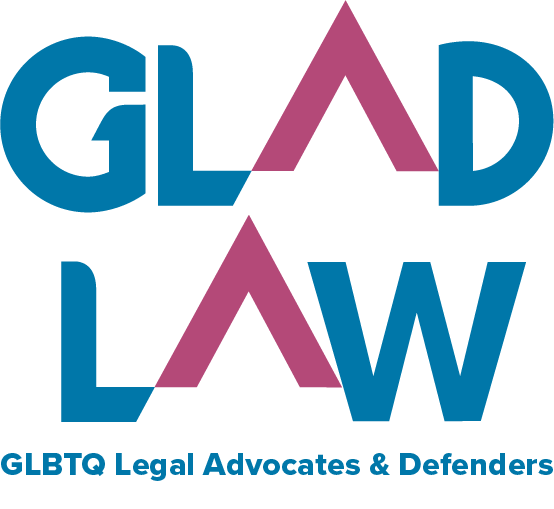
Blog
The Resistance Brief: Summoning Hope
Blog by Ricardo Martinez (he/him), Executive Director
Soft footsteps shuffled up and down the hallways of the GLAD Law offices, interrupting the silence after the Skrmetti Supreme Court ruling upholding a Tennessee ban on healthcare for transgender youth. Our Communications & Public Education Coordinator walked door to door, checking in and holding space for her colleagues.
This thoughtful action, simple in its technique and gentle in its approach, changed the way many of our staff navigated that day. In acknowledging and processing their shared pain together, they collected the implicit devastation in the air and claimed it as a core memory honoring our united struggle for equality. And in honoring our collective efforts leading up to this critical juncture, they practiced gratitude and cultivated a sense of hope for the future.
Recently, Representative Sarah McBride was quoted as saying, “Hope is a conscious effort – it’s audacious.” During times like these – when hope doesn’t feel tangible – it must be summoned from the depths of our despair, beyond the part of us that is angry and disillusioned with the world as it is.
Rep. McBride continued, noting that “hope isn’t about optimism, or circumstance, or evaluating likelihood.” It is recognizing that beyond the horizon, at the peak of the summit, and beyond the trees, there is a better world we get to co-create.
Hope has powered our movement for LGBTQ+ equality when losses have cut really deep. In 1986, after the U.S. Supreme Court upheld state laws criminalizing consensual sex between same-sex partners and limited privacy rights under the Constitution in Bowers v. Hardwick, our movement didn’t give up. We grieved a loss at the height of the AIDS crisis, regrouped and got to work. It took time and perseverance, but our community’s effort and dedication eventually led to the Supreme Court reversing itself 17 years later in Lawrence v. Texas, expressly acknowledging that “Bowers was not correct when it was decided, and it is not correct today,” and rendering all laws criminalizing sodomy unconstitutional. From the ashes of Bowers, and a movement’s work, came a decision underscoring LGBTQ+ people’s right to liberty and privacy. And Lawrence in turn was a building block to the Obergefell marriage equality ruling issued 10 years ago yesterday.
Hope declares that we believe in the power of a committed collective to right the wrongs of the world. It inspires the innovation, courage, and boldness we need to show up differently – battle-tested – and show out again and again.
No one teaches us how to hold people gently while the world debates our very existence in the public square. No one coaches us on how to care for ourselves and others when we exceed our anxiety and trauma threshold. And yet, when devastating events like the heartbreaking Skrmetti decision are announced, our community has reliably shown up determined to face the full-on assault on equality head-on because, as a good friend of mine reminded me, we cannot “predicate fighting on winning.”
I recently took part in a panel titled “Leading in Times of Uncertainty and Volatility.” We shared strategies on how to care for our staff, ourselves, and our community during a period of sustained government dysfunction, Supreme Court losses, lawmaker inaction, attacks on vulnerable communities, and political polarization.
The panel was an opportunity to share the strategies that have worked, but the reality is that we don’t always know how to prepare for the next crisis, and sometimes, showing up gingerly and stepping beside the rubble together is all we can do.
Our fight at its core must have soul – it must be anchored in vulnerability, compassion, grace, kindness, and anger. Yes, anger – because it is righteous to feel outrage at the indignities caused by the losses we face during this fight. While our setbacks are real, they are never the end of the story. We keep moving forward, refining our concrete strategies and developing novel tactics to galvanize people to create meaningful and sustainable change.
The tide can and will turn.
What to know, what to do:
- Tell Governor Ayotte not to take health care decisions away from families of transgender youth
- Learn more about how the Massachusetts Senate is working to protect reproductive and transgender care
- Join us at a virtual briefing on July 1 to hear about the impact of the Supreme Court’s final rulings and what comes next
- Celebrate the Obergefell 10th anniversary of marriage equality by reading Why it Matters, How We Won, and the Road Ahead
- Check out Evident Media’s interview with Major Erica Vandal on the transgender military ban




